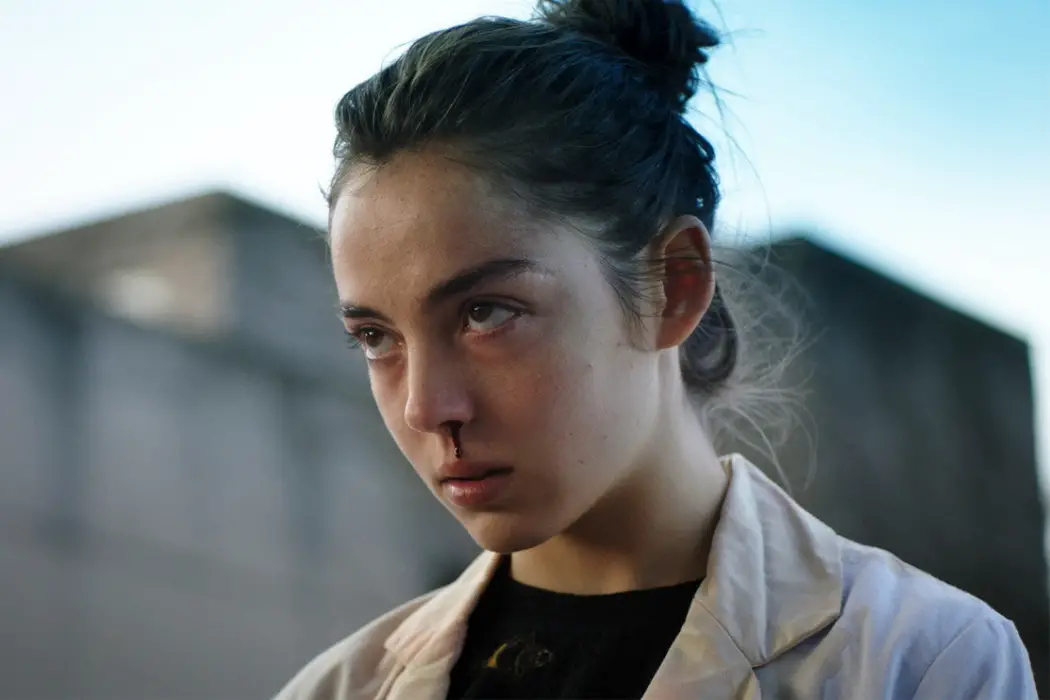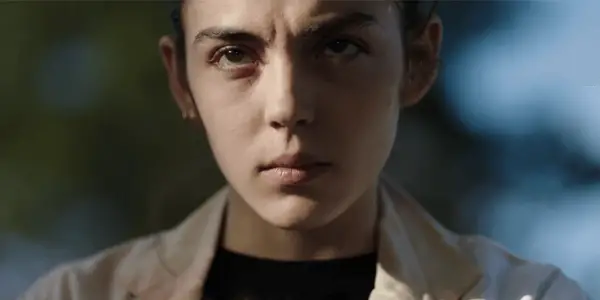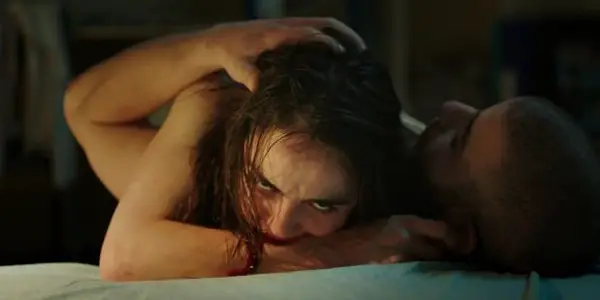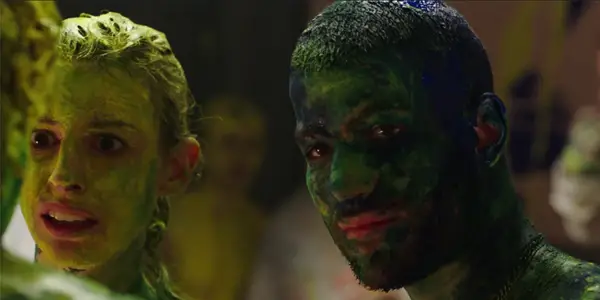RAW: A New Age Ravenous Tale

Alex is a 28 year-old West Australian who has a…
The idea of the cinema gimmick is not a new thing. Gimmicks were popularised in the 1960’s by William Castle, who became a cinematic icon through his series of horror films that employed in-cinema gimmicks such as electrified chairs and rubber puppets in order to entice audiences to check out his latest shlock horror film. Cinema gimmicks and horror films have always been closely linked, whether it be the rise of 3D cinema in the 80’s, the creation of viral marketing due to the success of The Blair Witch Project in the 90’s, and the issuing of barf bags whenever a film receives a notorious reputation through its marketing and festival screenings.
Whilst barf bags are an actual useful gimmick, not only are they a great marketing tool to give the attached film an immediate sense of notoriety and scandal, but people actually do use them. Especially in the 70’s and 80’s, with titles like Tobe Hooper’s The Texas Chainsaw Massacre or the cartoonishly gory sequences in Hershell Gordon Lewis’ films, “barf bag” cinema has become an infamous tag for any controversial exploitation film.
This brings me to Raw, Julia Ducournau’s provocative debut feature, which has been unfairly and stupidly tagged as a barf bag film, advertised as a blood-soaked gore fest which takes away from the film’s intelligent and subtle nature. I say this because I’ve noticed that some people have been expecting a completely different film to the one advertised, which in turn has prompted some negative reviews due to their reaction to the it’s hyperbolic marketing, not the material of the film itself (which has been happening alongside Nacho Vigalando’s Colossal, another film which has been severely misrepresented by its marketing).
Show and Tell
Raw tells the story of Justine (newcomer Garance Marillier), a shy but gifted veterinarian student who has just arrived at school in order to start college, where her older sister Alexis (Ella Rumpf) goes to as well. Despite being a stern vegetarian, her older sister forces her to indulge in an extreme hazing ritual which involves being splattered in animal’s blood and the forced consumption of a rabbit kidney. This first exposure to meat triggers a previously hidden desire to consume raw meat.

This process of realization occurs physically, as her internal hunger builds, she’s subject to a series of physical and mental transformations, helped by her older sister and friendly room-mate Adrien (Rabah Naït Oufella), who both try to guide Justine through the trials and tribulations of college life and the insatiable hunger for human flesh.
Why Raw works so well is due to director Julia Ducournau’s balance of tone, pace and story-telling, carefully shifting the film away from the exploitative and empty narrative it could’ve become, but not allowing the film’s subtle and indirect nature to become slow or pretentious. Similar to Yorgos Lanthimos’ The Lobster from 2015, this is a genre film which opens with an alarmingly violent but beautifully shot sequence which immediately demands the audience’s attention and instantly sets up the film’s gruesome and unpredictable nature, without falling into shlock territory.
Exposition is frequently delivered without dialogue, usually given through stylish visuals and purposeful cinematography, with Ducournau trusting the audience enough to follow her as Justine’s journey becomes more intense and stomach-churning, that all feel essential to the narrative and not exploitative at all. There are several scenes where the visuals get incredibly intense, some body horror imagery that have awarded the film its infamous reputation, but these parts are purposefully filtered throughout the narrative, which keeps the overall momentum flowing continuously through the movie’s swift 90 minute run-time.

Also like The Lobster, the film employs a sense of incredibly dark humour, and outside of a scene of gory slapstick, never lets the humour overtake the graphic nature of the narrative. An odd comparison, but one of the problems that people have with the current series of Marvel Superhero films, is that every moment of drama or seriousness is constantly undercut with a one-liner or moment of alleviating humour, in order to relieve the audience and keep the sense of enjoyment constant.
I feel like a film like Raw could’ve suffered the same fate under a different director, as Ducournau understands the intensity of the material, never shielding the audience away from its most harsh visuals, allowing the film’s editing to give the desired cathartic feelings when each of these fierce scenes end, as opposed to an in-scene joke/one-liner, especially when these brutal moments tow the line from provocative to pure exploitation, knowing when to cut at just the right time to best maximise the effectiveness of each scene.
The Intelligent Type of Horror
This film highlights the power of the horror genre, a provocative genre that can disguise its social commentary and thematic elements through its horrific sequences of terror and suspense, an element that alot of forgettable/trashy films forget. The best horror films; The Exorcist, The Shining, Wicker Man and more all use their cinematic tools and tropes of the genre in order to frighten audiences, but use them as vehicles for deeper perceptive material, which is what Raw does here. Whilst primarily a horror film, the film uses the narrative structure and visuals of the coming of age and college-film subgenres, all 3 film genres which have been done to death which is why seeing a subversive take on them in Raw is so refreshing to see.
Even though people may just talk about the film’s intense nature, Ducournau backs this up with an insightful look at conformity, modern feminism, body image issues, the treatment of homosexuality in today’s society and much more. None of it feels ham-fisted or awkwardly presented, each of these statements that Ducournau addresses feels organic to the narrative and intelligently woven into Justine’s vivd odyssey.

Another major factor in why the film works is its soundtrack, a mixture of modern EDM, brooding John Carpenter synthesisers and orchestral strings which really boost the striking visuals and add to the intensity of the building narrative. Without spoiling anything, the film boasts the best end credits music this year and I doubt it’ll be beaten (unless Baby Driver picks a really great track). Whilst I’ve been praising all the technical aspects of the film, I must also praise the level of acting across the board, with not one bad performance given by anyone in the cast. Garance Marillier infuses Justine with a sense of genuine innocence that is slowly shattered by the events that befall her, completely selling her transformation into the immoral decision-maker she becomes.
Conclusion
Julie Ducournau’s Raw is a great piece of genre film-making and alongside Jordan Peele’s Get Out, is one of the most impressive debut features that has been released recently. Even though the film has been tagged with the label of ‘barf bag’ cinema, setup with the expectations that this is a crazy French cannibal film, Raw delivers so much more than that. Through a seamless combination of tight camerawork, vivid visuals, a pulsating soundtrack and a collection of impressive acting help deliver an intelligent and intense experience that sticks with you long after its viewing, thanks to its thematic depth and various sequences of insane body horror.
Like most films nowadays, its best to recommend this with saying the less you know the better when going in, but understand that it is a straight up horror movie through and through, done with the aesthetics of European arthouse. Raw is a unique and genuinely startling entry into the horror genre and it is highly likely to sit as one of my favourite films of the year by the time December hits.
Have you ever felt that a film has been misrepresented by its marketing?
Raw is currently on limited release in the UK and USA. All international release dates are here.
Does content like this matter to you?
Become a Member and support film journalism. Unlock access to all of Film Inquiry`s great articles. Join a community of like-minded readers who are passionate about cinema - get access to our private members Network, give back to independent filmmakers, and more.













